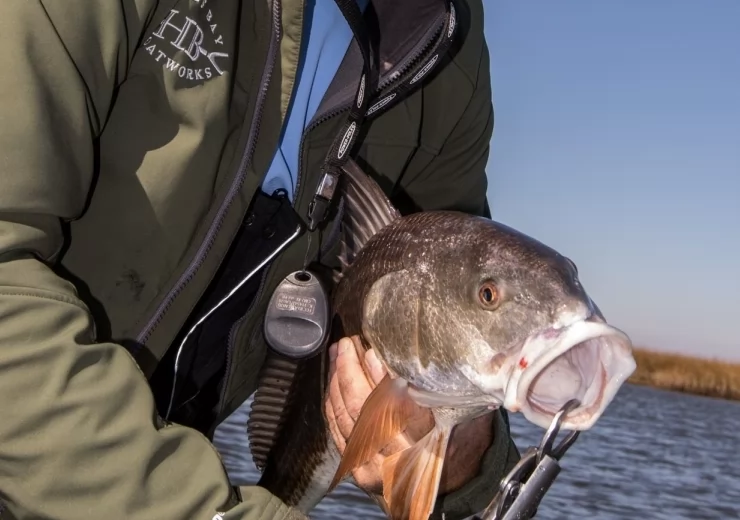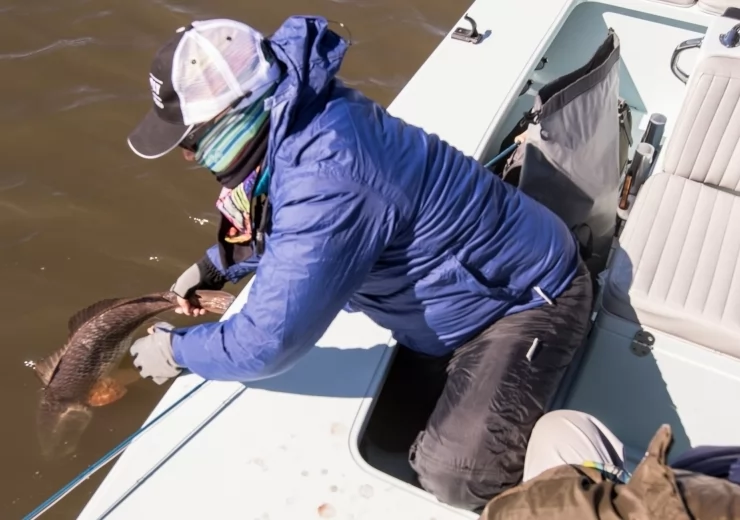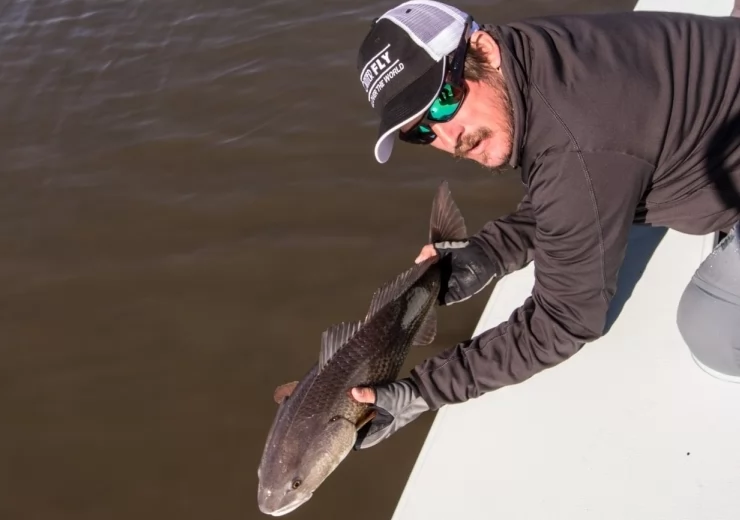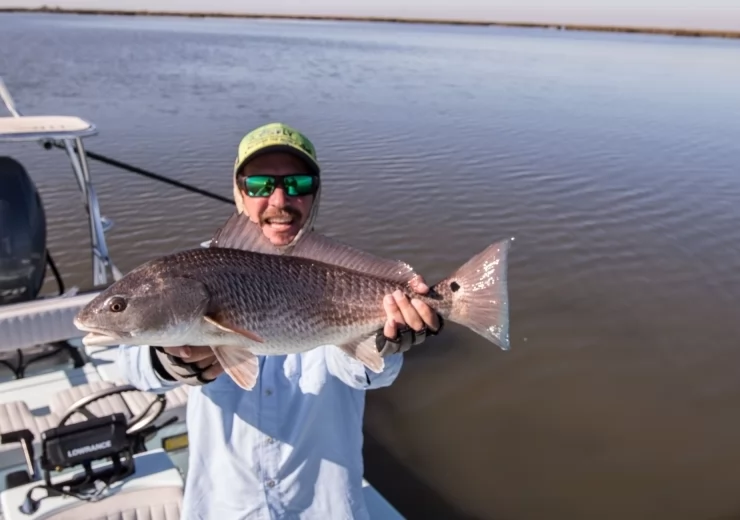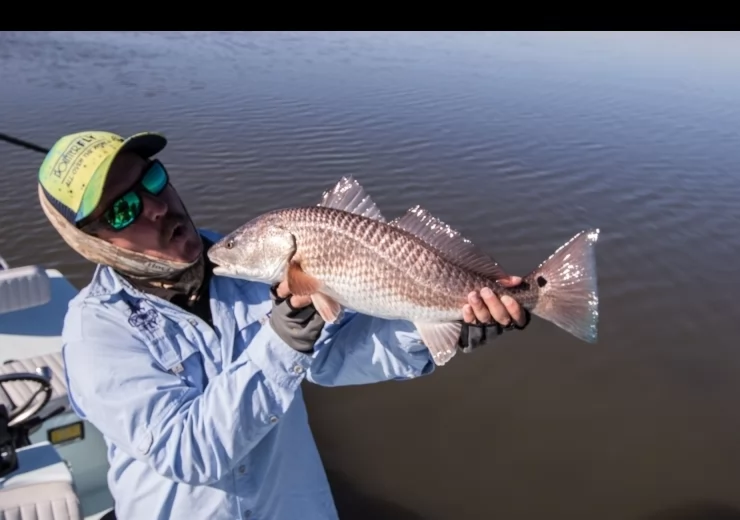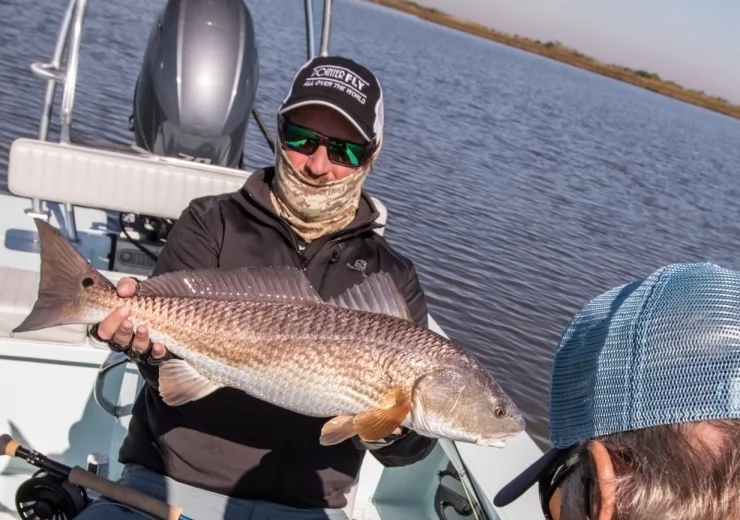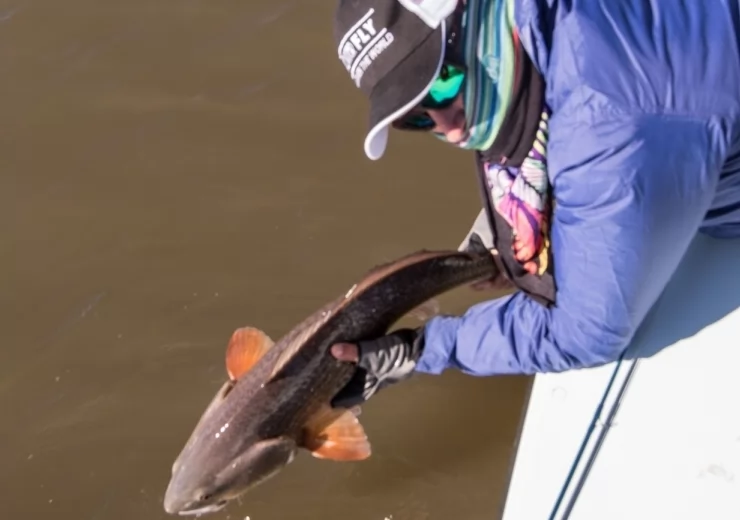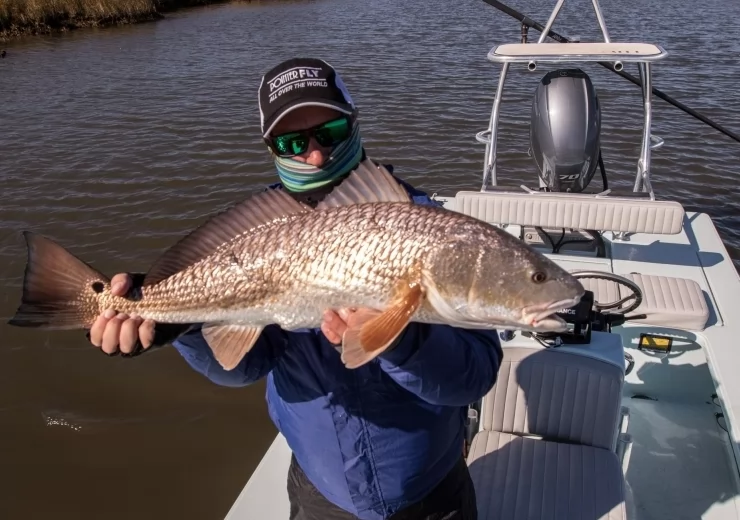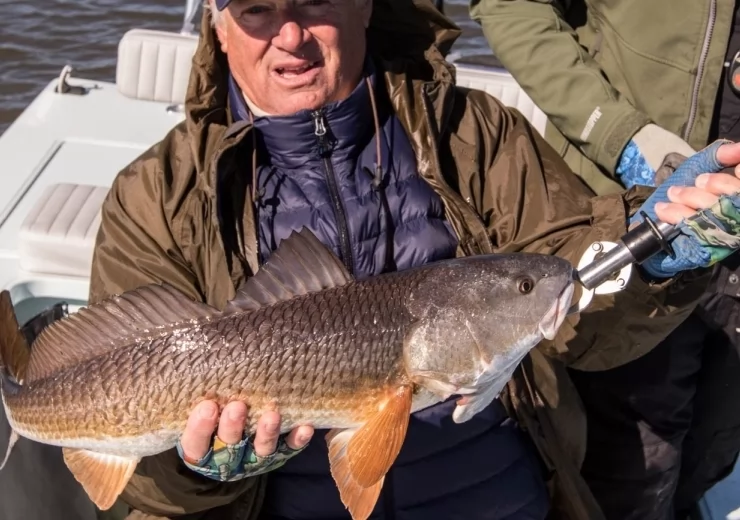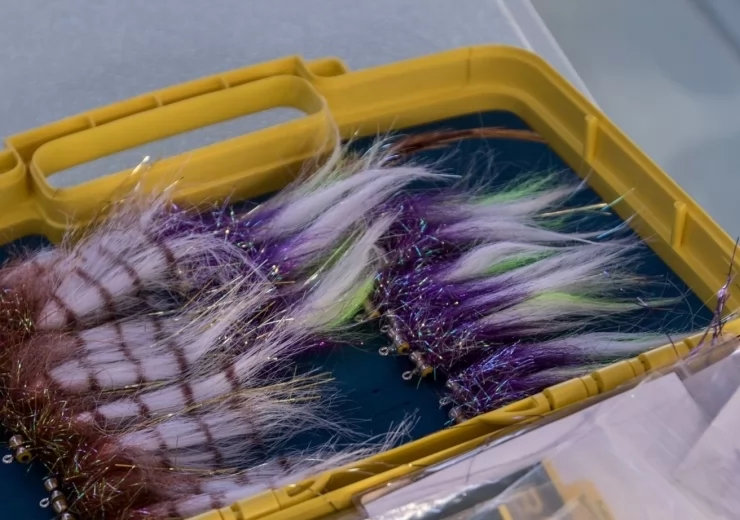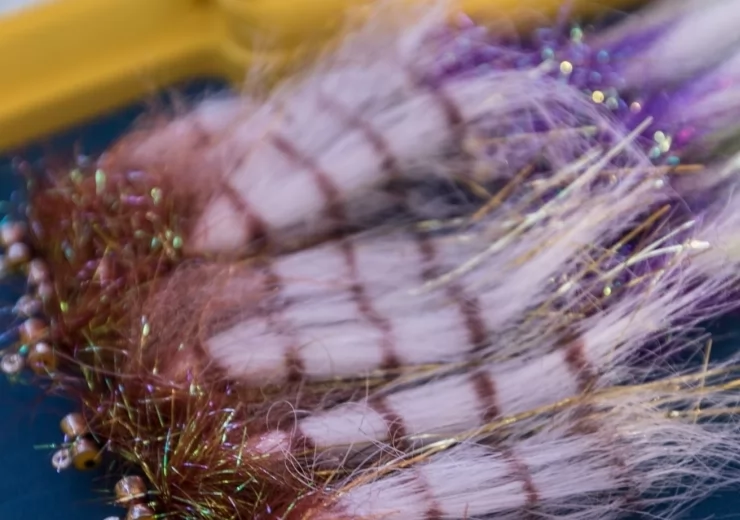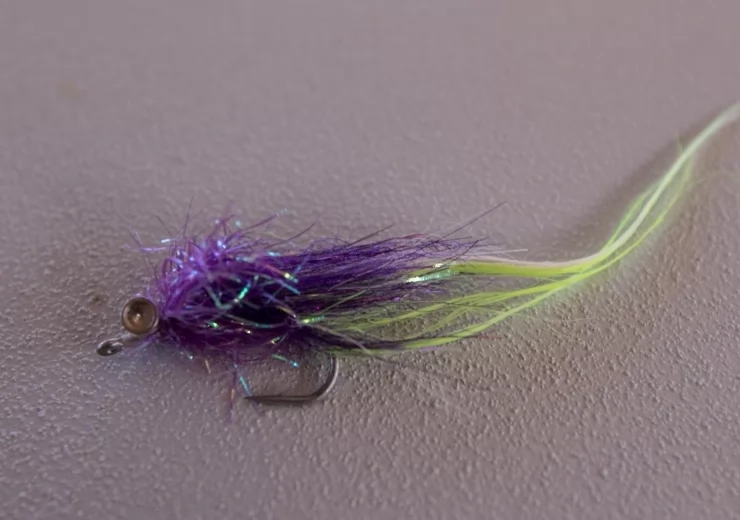Overview
HABITAT
Red drums prefer shallow waters along the edges of bays with submerged vegetation such as seagrasses. They are found over all bottom types but they seem to prefer areas with submerged vegetation and soft mud. These fish are also commonly found around oyster reefs. Breaks in continuity of shorelines such as coves, points, jetties, old pier pilings, and guts attract them. They prefer soft mud along jetties, pier pilings and jetties. They are often found in water so shallow that their backs are exposed while swimming. During cold spells large numbers of red drum can be found in tidal creeks and rivers. They can live in fresh water and have been found many miles upriver.
FEEDING
In the summer and fall, adult red drum feed on crabs, shrimp, and mullet; in the spring and winter, adults primarily feed on menhaden, mullet, pinfish, sea robin, lizardfish, spot, Atlantic croaker, and mudminnows.
The fishing
One attractive characteristics of this fish is its willingness to take most kinds of bait, both natural and artificial. The best natural baits are live shrimp, small finger mullet, Atlantic croaker, and small live blue crabs. Live shrimp are fished under a popping cork or "free shrimped" using a small weight and letting the shrimp swim freely. Live fish are best on the bottom using a slip-sinker type rig where the fish can swim freely. The bait fish are hooked through the lips or through the top of the back behind the dorsal fin. Small blue crab are fished on bottom and are hooked through one of the swimming legs at the rear of the crab.
Gear and equipment
Stalking the shallow grass flats for red drum is the ultimate challenge for the wade anglers. Artificial baits such as 1/2 and 1/4 ounce shallow-running gold, copper, or silver spoons are favorites. A weedless spoon is used in areas of heavy submerged or floating vegetation.
Fish-shaped plugs, both floating and shallow-running, are effective over the grass flats. Shrimplike plastic worms and jigs are good and both are fished under corks or bounced along the bottom.
The surf provides excellent red drum fishing. The best artificial baits are the heavier spoons and slow sinking fish shaped plugs. Plastic worms are also effective bounced along the bottom.
Saltwater flyfishing for red drum is increasing in popularity. Flyfishers sight-cast small surface popping plugs, baitfish type streamers or shrimp and crab imitation flies to "cruising" or "tailing" red drum. Rod lengths range from 8 1/2 to 9 1/2 feet casting weight forward, floating line from six to nine weight. Leader lengths can be from seven to 9 feet with a tippet strength from eight to 15 pounds. Once hooked, a red drum on flyfishing tackle is a worthy, exciting adversary.
For smaller fish (less than 10 pounds), the best rod to use should be 6 1/2 to 8 feet long, has a medium action, and has a two-handed grip to help the anglers in long distance casting. Reels should be able to hold at least 100 yards of line. Line strength will vary depending on what type of habitat is being fished. Heavier line (17-25 pounds) is needed when fishing around oyster shell, rocks, or pilings. Lighter line (8-15 pounds) is favored when fishing the grass flats. Leaders are optional, depending on line weight and where the fishing occurs.

